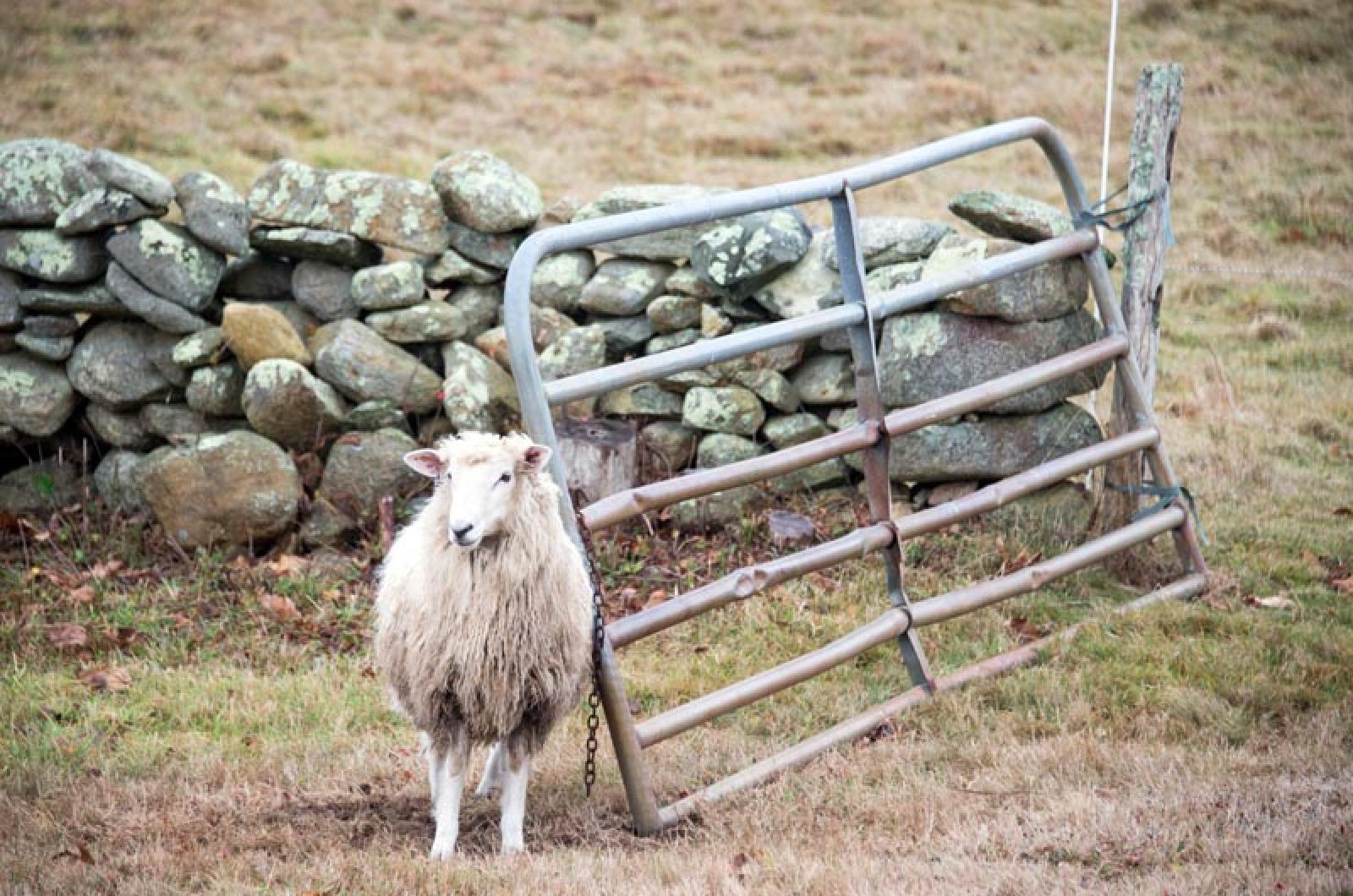From the Dec. 4, 1964 edition of the Vineyard Gazette, by Joseph Chase Allen:
Taking them full and by, as the old sailormen would have said, Martha’s Vineyard people have always been a neighborly sort, living at peace with each other for the most part through the generations. Volumes might be written about the cooperative efforts by which houses were built, the stone walls erected, wood chopped and wharves constructed, but this article is not about such things. Rather it refers to the rift in the lute which occurred now and then as the result of a neighborhood difference of opinion. Under such circumstances, an occasional man, seething with resentment against a neighbor, would “pin his bars.”
What this meant in the days before there were any public roads can hardly be imagined now. Main travelled ways existed by which persons, animals and wheeled vehicles passed from one end of the Island to the other, and it is unlikely that anyone tampered with the many barricades to be found along such routes. But there were also shortcuts, running in all directions across farms, sheep pastures, even cornfields, by which men could travel with a horse and cart or on horseback.
All such travel involved the opening of bars and occasionally gates; occasionally, for the reason that gates were never popular in older days. But gate or bars, unwritten law which lacked no force because it was unwritten, decreed that having opened a barway and passed through, the passer must replace the bars with exactness, and the gate must be closed and secured.
But, came the disagreement between Neighbor A and Neighbor B, and A promptly “pinned his bars.” Pinning bars consisted in the boring of an auger hole through a rail next to the bar-post and fitting an oaken pin through the hole, tapered in order that it might be driven in tightly. With such a pin in place the rail could not be backed through the post at one end and disengaged at the other. In other words the bars could not be opened without first removing the pins.
Of course this “pinning” of bars did not stop traffic, especially when Neighbor B desired to travel that way. It merely caused him unnecessary inconvenience.
It was simple enough to find a stone and to hammer the pins loose in the rails. But hammering on the pins “boomed” the ends, while they could be worked clear of the augerhole, they could not be easily returned to the place from whence they had come. As the unwritten law decreed that pins should be replaced as well as rails, the traveller needed his jackknife in order to trim the smaller end of each pin that it might not jam in the augerhole.
Well, he did this and the property owner could not complain. In that early time people travelled where the going was best and the distance shortest, and if the chosen way ran through a yard nothing was said unless some saddle-horse, left unattended, ate up the flowers or barked a fruit tree. But when bars were pinned, this was talked about, far and near.
The act was unfriendly, almost a declaration of war. It was a public admission of existing bad blood and at times it led to overt acts.
Once, it is recalled, an elderly man of uncertain disposition was asked why the rails in his back barway were pinned, and he muttered that the sheep rubbed the bars open sometimes if they were not secured. Even the small boy who queried knew that a sheep could not rub on a rail that was no more than six inches from the ground. But he also knew that a cart could not pass through unless the rail was removed, or, if the wheels passed over it, the rail would be shattered.
As long as the up-Island hills were pastured with sheep, the old barways were important and were kept in repair and closed. Some of these were closed permanently, and sad to say, “city folks” brought this about.
Strangers did not or perhaps could not figure out the proper procedure when one bar-post had four holes through it and the other had five. And thus it was, at times, that the rails were replaced on a slant which brought the lower one some eighteen inches off the ground at one end, a gap which attracted young lambs who quickly took advantage of the invitation to roam.
At such times a vengeful owner came upon the scene with a heavy hammer and a pocketful of spikes and nailed the rails into the posts. A few times such an owner also hauled heavy boulders into a barway to prevent for all time the passage of a horse and carriage. A few such examples of man’s vengefulness may still be found here and there.
But barways are few today. Rails have become scarce on the Island as the years have passed and the need for them has decreased. But recently, by a roadside where a stretch of old sagging fence had been replaced with modern wire and steel posts, there lay a small pile of old, rotting rails. Among the ends in view lay two which had augerholes through them. Sometimes, somewhere, those rails had been pinned, perhaps to cause talk for miles around.
Compiled by Hilary Wall
library@mvgazette.com




Comments (1)
Comments
Comment policy »